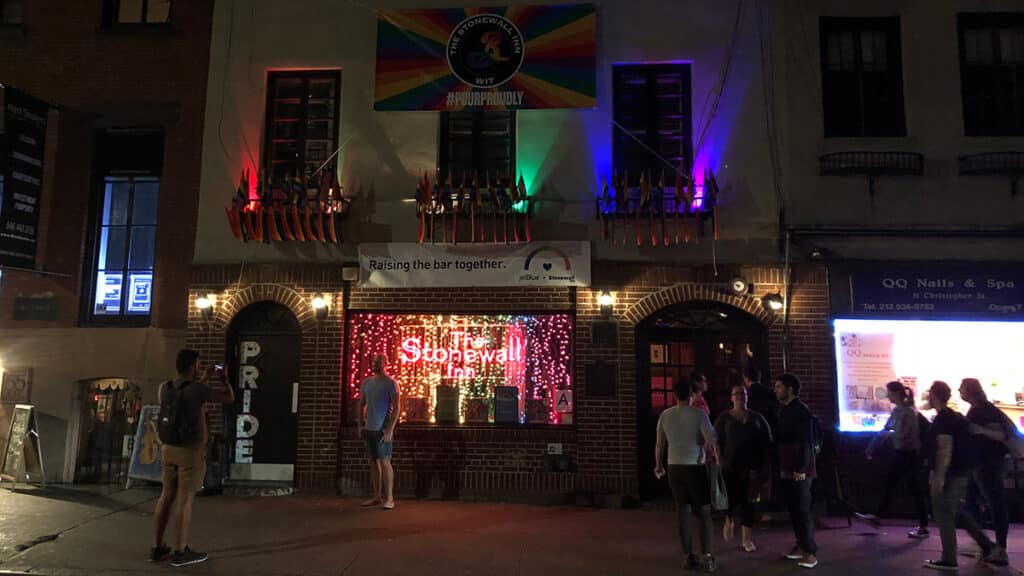The Stonewall Inn is a historic gay bar where the LGBTQ+ rights movement gained force with the Stonewall Uprising in the wee hours of June 28, 1969.

The West Village LGBTQ+ Community
The West Village has a long association with the LGBTQ+ community because back in the day, coming out often meant getting kicked out of your family home.
Without any place to go, young people would squat in the abandoned piers that lined the Hudson River in the 1960s. A community developed around that.
In those days there weren’t many places where the LGBTQ+ community could hang out openly. The Stonewall Inn was one. It’s hard to imagine now, but The Stonewall Inn was the only gay bar in New York City where dancing was allowed. They just wanted to dance without being harassed.
The Stonewall Uprising
To their credit, the NYPD apologized in 2019 for police behavior at the Stonewall Uprising. But back in the day, it was sort of an NYPD sport to go beat up “the fairies” once in a while, which was usually once a month. The police in those days were cruel to the LGBTQ+ community. If you were dressed in drag, they might force you to strip down or violently feel you up to prove your gender. There were endless indignities like that. It was all done just to be mean. (Never mind the fact that people who are extremely anti-LGBTQ+ are usually in the closet themselves.) Raids could be avoided by paying off the police in cash weekly, but apparently they weren’t paid off enough.
Anyway, on June 28, 1969, “the fairies” refused to submit to the usual harassment. Remember being outed in those times often meant losing your family and even your job. As the police did their thing, a crowd gathered. When the police carried on handling people with unnecessary violence, the crowd began to respond in kind. Turns out that many in the crowd were people of color.
You Have to Stand Up to a Bully
The police were stunned. It completely shocked their machismo. The Uprising went on and off over the next five days.
The Stonewall Uprising didn’t start the LGBTQ+ rights movement, but it was the last straw. People started to organize. When the HIV/AIDS crisis hit in the early 1980s, people began dying all around. This really brought the community together into coherent action.
There remains much to be done, but the LGBTQ+ community has made more progress in less time than any other human rights movement in history. The lesson is, you have to stand up to a bully. But there is one more thing to do – flip the bully into a friend. That is the end game.
Stonewall is a U.S. National Monument
The Stonewall building was listed on the National Register of Historic Places in 1999. It became a National Historic Landmark in 2000. It became a New York City Landmark in 2015 and a U.S. National Monument in 2016.
Pride Month (June) and Pride Week (last week of June) commemorate the Stonewall Uprising of 1969.
Visiting the Stonewall Inn
53 Christopher St
(near Seventh Avenue)
West Village, NYC
It’s sacred ground and we are representing. Please behave.
